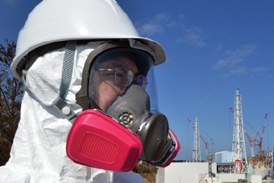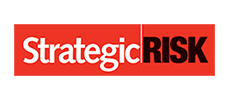Safety experts warn that employers must still manage workplace conditions during extreme temperatures, despite Trump’s administration freeze. Here’s what businesses need to know
Although the US federal government has paused efforts to formalise nationwide regulations on heat-related workplace risks, safety professionals are urging employers not to let their guard down.
The move comes after the US administration placed a hold on all pending rulemaking in January, including a draft heat safety regulation that had been progressing through public consultation.

What’s changed?
The proposed federal rule would have imposed clear requirements on employers to protect workers from extreme heat - particularly relevant in sectors like construction, agriculture, and logistics.
However, the rule’s future now looks uncertain, with all references to it quietly removed from the US Occupational Safety and Health Administration (OSHA) website.
Michael Metz-Topodas and Sean Cooley at law firm Saul Ewing LLP wrote in a blog: “Recent executive orders and related maneuvers have put the HIIP Rule essentially on hold but have not necessarily eliminated it.
“Consequently, in preparing for the rule’s possible implementation, employers need to assess the likelihood of the rule’s enforcement, the risks of noncompliance, and the costs to implement required heat hazard protection programs. Making such determination demands understanding how the uncertainty over the rule emerged.”
Just days after OSHA’s proposed Heat Injury and Illness Prevention (HIIP) Rule was introduced, the regulatory process came to an abrupt halt. On 7 July 2024, President Trump issued a presidential memorandum titled “Regulatory Freeze Pending Review,” instructing all executive agencies to pause any new or ongoing rulemaking activities.
Under this directive, no regulations could move forward until they were reviewed and approved by a department head appointed by the President.
This sweeping freeze has cast doubt over the future of the HIIP Rule, effectively stalling its progress until OSHA leadership is fully established and authorised to revisit the proposal.
On February 11, 2025, the Senate received the nomination of David Keeling for Assistant Secretary of Labor for Occupational Safety and Health, the position to lead OSHA.
Topodas and Cooley said: ”With both executive and workforce experience, few can determine whether, as OSHA’s head, Keeling will bring a more pro-employer perspective than prior OSHA leadership or a greater insight into workers’ needs. Given Keeling’s mixed perspectives and OSHA’s previous diminished role under the first Trump administration, OSHA’s priorities will likely shift, which could impact the HIIP Rule’s fate.”
What does this mean for businesses and risk managers?
Despite this, the issue is far from dead. Several individual US states—at least seven so far—have moved ahead with their own heat safety standards.
For example, lawmakers in Massachusetts are actively developing legislation to introduce workplace heat protections.
Meanwhile, Nevada OSHA has introduced a new regulation to protect employees from heat illness, with enforcement starting on April 29, 2025. The heat illness regulation requires Nevada employers with more than ten employees to create a written safety program and conduct a job hazard analysis (JHA).
Employers are required to provide training on heat illness prevention, provide rest breaks, ensure access to potable water, and designate a person to monitor working conditions and emergency responses.
And a new piece of legislation is making its way through the Colorado House of Representatives is set to tackle the risks posed by extreme temperatures in the workplace.
Known as House Bill 25-1286, the proposal—backed by Representatives Velasco and Froelich, along with Senators Weissman and Cutter—calls for employers to take proactive steps to protect staff working in both severe heat and cold.
If enacted, the bill would require companies across the state to introduce safeguards such as temperature control strategies, scheduled rest periods, and comprehensive plans aimed at preventing temperature-related injuries and illnesses—collectively referred to as TRIIPP (Temperature-Related Injury and Illness Prevention Plans).
These requirements would apply to both indoor and outdoor working environments, helping to ensure that employees are better protected as extreme weather events become more frequent and severe.
Clearly, these state-level rules often reflect what the federal government had been proposing: access to water, shade, rest breaks, acclimatisation protocols, and documentation requirements.
For companies operating across multiple states, this patchwork of regulations creates significant complexity. Where there’s no consistent federal standard, businesses are left navigating a confusing web of local rules that may differ in scope and enforcement.
Even in states without formal regulations, OSHA is still empowered to take action. Under its General Duty Clause, the agency can investigate and penalise employers where heat exposure leads to injury or death and where reasonable protective measures were not in place.
There’s increasing scrutiny around such cases, and previous assumptions—that heat-related deaths were due to pre-existing health issues or natural causes—no longer hold weight with regulators.
Adding to the uncertainty, OSHA recently extended its Heat National Emphasis Program, originally due to expire in April 2025, by another year. This signals that the agency still considers heat stress a priority, even in the absence of new legislation.
What should employers do next?
Whether or not a federal rule is ultimately enacted, businesses can’t afford to wait. Industry experts agree: proactive measures are essential.
Risk managers should assume regulatory oversight will continue and prepare accordingly, and employers should focus on practical, preventative steps such as:
- Conducting heat risk assessments across all relevant roles and locations.
- Implementing common-sense policies including scheduled rest breaks, hydration stations, access to shaded areas, and gradual acclimatisation for new or returning workers.
- Training staff and supervisors to recognise the signs of heat-related illness and respond appropriately.
- Keeping accurate records of any incidents and mitigation efforts.
- Staying up to date with emerging local laws and guidance from safety organisations, many of which are offering ready-to-use resources like templates, webinars, and policy guides.
Heather Chapman, Grand Rapids, Michigan-based head of safety & risk at Soter Analytics, which develops risk management programs for companies, said: “There’s still a national emphasis program that’s in place, so, in theory, employers should be abiding by that.”
“And despite the lack of clarity on whether we’ll actually see a federal standard, lots of (safety) organiaations are still producing content around heat stress. That’s webinars, training, documents, template programs, and those are still available and accessible to employers.”
The key takeaway? Ignoring heat risks is no longer an option. With extreme weather events on the rise and regulatory attention increasing—even in the absence of formal federal rules - businesses must treat heat safety as a critical part of their health and safety strategy.








No comments yet